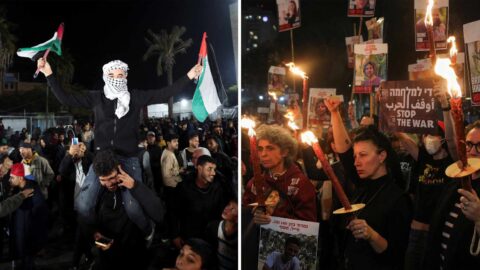The Middle East witnessed a historic moment as Israel and Hamas agreed to a long-anticipated ceasefire, bringing hope to millions affected by the 15-month-long Gaza conflict. This landmark agreement, brokered by Qatar and the United States, aims to halt hostilities, release hostages, and pave the way for a sustainable peace process.
Key Provisions of the Ceasefire
The ceasefire agreement outlines a phased approach to de-escalation:
1. Cessation of Hostilities: A complete ceasefire will last for 42 days, during which Israeli forces will withdraw from populated areas in Gaza.
2. Hostage Exchange: In a goodwill gesture, Hamas has agreed to release 33 hostages, while Israel will free 1,000 Palestinian prisoners.
3. Humanitarian Aid: Immediate provisions will ensure the delivery of medical supplies, food, and rebuilding materials to Gaza.
Mediators have expressed optimism about the agreement, emphasizing its potential to address longstanding grievances on both sides. (BBC News)
International Reactions

World leaders have welcomed the ceasefire as a critical milestone for peace. U.S. President Joe Biden highlighted the deal’s humanitarian significance, while the United Nations Secretary-General urged both sides to honor their commitments. Countries like Qatar and Egypt, which played crucial roles in brokering the truce, continue to emphasize dialogue as the only path forward.
Public sentiment in both Israel and Gaza remains mixed. While some view the ceasefire as a necessary step, others remain skeptical about its longevity. (The New York Post)
Humanitarian Concerns in Gaza
The conflict has left Gaza’s infrastructure in shambles, with hospitals overwhelmed and essential services disrupted. According to humanitarian organizations, over 2 million residents in Gaza face food insecurity. The ceasefire aims to prioritize relief efforts, enabling NGOs to deliver aid without the threat of violence.
Images of families reuniting and children receiving medical care highlight the immediate impact of the truce. However, rebuilding Gaza will require international cooperation and substantial financial investment. (Reuters)
Challenges to Sustaining Peace
Despite the ceasefire, reports of isolated violence underscore the fragility of the agreement. Analysts warn that unresolved issues, such as border security and political representation, could derail progress. Additionally, factions within both Hamas and the Israeli government remain divided over the terms of the deal.
Observers stress the importance of third-party monitoring to ensure compliance. The United Nations and other global organizations are expected to play key roles in verifying the agreement’s implementation. (State Department)
Looking Ahead: The Path to Stability

While the ceasefire offers a temporary reprieve, experts agree that lasting peace will require addressing deeper political and social issues. Initiatives such as confidence-building measures and economic cooperation could help reduce tensions in the long term.
Peace advocates hope the agreement will serve as a model for resolving other regional conflicts, demonstrating the power of diplomacy over violence. (Al Jazeera)




